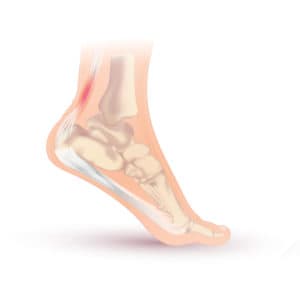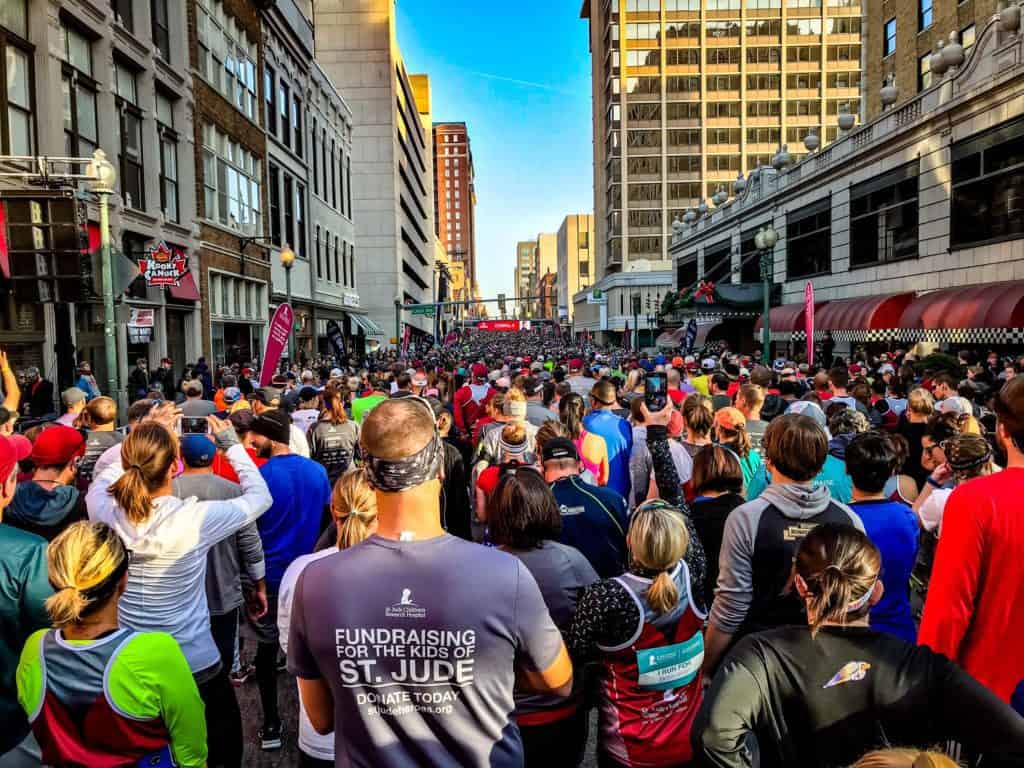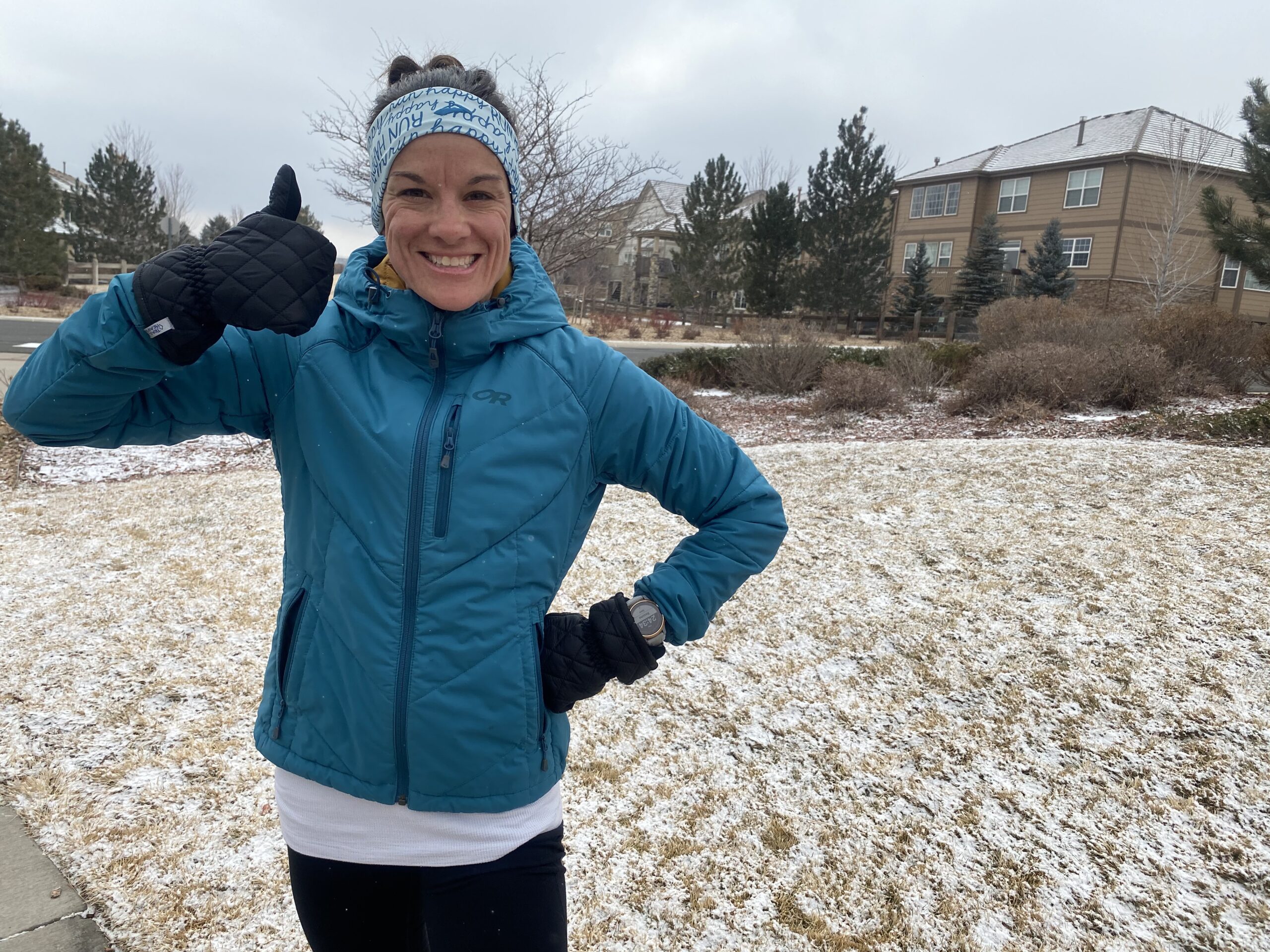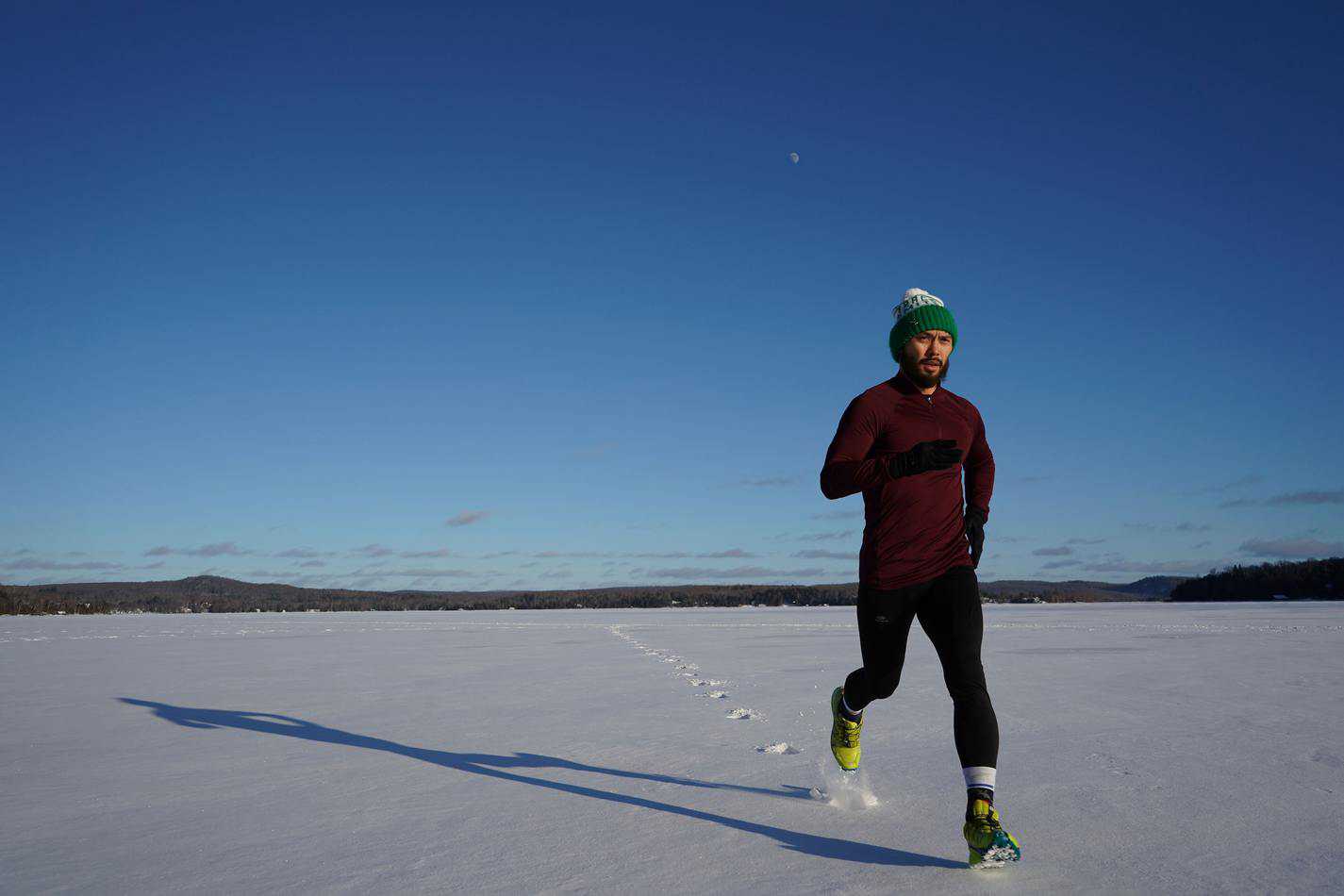Veteran marathon runners have usually experienced their fair share of running-related injuries. Ranging from an annoying niggle to one that requires surgery, they are something that endurance runners risk. Achilles tendonitis is one of those injuries that is more common for marathoners than they care to admit. Often in the middle of the injury spectrum, Achilles tendonitis in a marathon runner can easily put an end to their training cycle if they aren’t careful.
In 2017, it almost brought my season to a screeching halt. I wondered why this was such a common injury for marathon runners and hoped to avoid a DNS (do not start) for my upcoming 26.2 mile race I’d been training so hard for. I surmised that getting to the root of the problem would allow me to fix it before it got too late. Let’s find out why Achilles tendonitis happens and what to do it about it, so you can keep running, too.
So, why do marathon runners get Achilles tendonitis? When a runner pushes off the ground, every foot strike puts an enormous amount of pressure on the Achilles tendon. Tight calf muscles require the Achilles to overcompensate, putting a runner at a greater risk for Achilles tendonitis. Marathon runners often overuse the tendon causing even more pain.
As the largest tendon in the body that supports all of the walking and running that you do on a daily basis, various causes can lead to its discomfort…or worse. No marathon runner wants a debilitating injury getting in the way of their goals. Here we will outline the Achilles’ role in running, causes of Achilles tendonitis in marathon runners, and what you can do to fix it in time to make it to the starting line healthy and ready to race.
Why Runners Need a Strong Achilles Tendon
The Achilles tendon connects the calf muscle to the heel bone. It is the largest and strongest tendon in your body. Used when pushing off your toes, the Achilles tendon pulls on the heel every time the calf muscle is flexed. It’s necessary for everyday movement such as walking, running and jumping. When not overused or put under extra stress, this important tendon usually performs its function without damage.
However, when extra tension is put on the tendon, inflammation can occur leaning to varying levels of injury.
Running makes the Achilles extra susceptible to injury, so marathon runners especially need to be careful to keep the tendon functioning properly.
The way the Achilles tendon allows for movement is by transmitting the force created in the calf muscle to the bones in the heel and foot. When moving, the tendon elongates almost like a thick piece of elastic. Running causes a person to become slightly airborne which requires more elongation of the Achilles tendon than when walking, as explained in this study. When ground contact is made with the foot, a great amount of force is required from the tendon to continue forward movement.
For someone running many miles such as in training for a marathon, the repetitive movement places a high need on this part of the body. Maintaining a strong Achilles tendon is paramount for continuing with marathon training.
Being that up to 6 times a person’s body weight of strain is put on the tendon while running, marathon runners are prone to Achilles tendonitis if they aren’t careful.

Causes of Achilles Tendonitis in Marathon Runners
Achilles Tendonitis is one of the most common running-related injuries.
Athletes training for marathons are especially at risk due to the number of miles incorporated. Any additional hill or speed training can induce even more stress.
If you are a beginner or someone who’s taken a hiatus from running, this injury can happen more readily due to the newly added repetitive motion involved in running. This ailment can come in the form of tightness, swelling, irritation, and pain. Catching it early is the best way to prevent it from getting worse.
Unfortunately, there can be multiple causes so it’s important to get to the root of why it’s happening before it’s too late.
Some of the most frequent causes of Achilles tendonitis include:
Wrong Shoe Size or Fit- Finding the right footwear for running is more complicated than it seems. Every runner has a different foot-strike and pronation. Getting properly fitted for shoes can help any Achilles tendonitis issues you may be having. Shoes should be replaced every 300 – 500 miles, and for a marathon runner, that can happen in a hurry. For shoe recommendations, read: The Best Running Shoes for Achilles Tendonitis.
Frequent Hill Running – Incorporating hill training can often be a valuable part of marathon training. It not only prepares you for any elevation in your race but also makes running on flat areas feel easier since it builds stronger leg muscles. However, hill training isn’t always your Achilles tendon’s best friend. When running on hills, the majority of the foot-strike happens on the forefoot and toes. This causes more elongation of the Achilles Tendon and more exertion from the calf muscle. This is not a winning combination when the build-up happens too fast.
Tight Calf Muscles – Often attributed to overuse, continuing to run on tight calf muscles isn’t a smart choice for runners. Instead of balancing stress between the calf and the Achilles, the Achilles begins to take on undue stress. This happens because the unhealthy calf isn’t pulling as it normally would.
READ: How to Prevent Injury in Marathon Training
Adding Speedwork – Tight calf muscles can happen as a result of the addition of speed training. This also puts more stress on the tendon in general due to a stronger push off. Runners find themselves down with this type of injury when adding in too much speedwork, too fast, and too soon.
Building Mileage too Quickly – Talk to many seasoned marathon runners and if you tell them you are suffering from Achilles tendonitis, they will probably not be surprised by this very common overuse injury. Well-meaning marathon newbies who are ready to work hard and put in the effort often end up building their weekly mileage way too fast. This is a sure way to cause tight calves, which again, puts a tremendous amount of stress on the Achilles.
Skipping Recovery Runs: You have big goals, so you might think that means running hard all the time. But your body will break down quickly if you don’t incorporate easy runs into your training. In fact, you should have a recovery run built into your schedule almost every other day that you run…speed workouts or long runs without a recovery run the day after will start to wear your body (and your Achilles) down. You can find out more about the planning of your recovery runs and the speed to run them at in my article: The Importance of Recovery Runs in Marathon Training.
Treadmill Running – There is evidence to suggest that frequent treadmill running can be a cause for Achilles tendon issues. This article confirms that by stating that bad form on the treadmill is a contributing factor.
As soon as you are feeling discomfort in your Achilles, it’s time to back off in your training. Pinpointing the underlying factors can also help you fix it so you can get back on track.
Making it to the Starting Line with Achilles Pain or Tendonitis
There are varying levels of Achilles injuries. Even though skipping your run seems like the worst thing that could happen right now, just imagine how you’ll feel if you can barely walk. This is not the situation you want. But according to Cleveland Clinic, if your Achilles tendonitis goes untreated, that is exactly what could happen. So, what can you do? This is where you’ll want to listen up.
Step 1: Begin by taking into account how your Achilles feels. If the discomfort is mild, back off your training. Take a few days off until it (and your calves) feel normal again. In the meantime, double check your shoes…do you need to replace your old pair…or perhaps get fitted by a shoe pro?)
Then, ease back in. Scale back your mileage and add in hill training and speed training slowly. If the majority of your training has been treadmill-based, it’s probably time to take more of your runs outside. Often, this overuse injury can be avoided going forward if a more conservative approach is taken to marathon training. If you have anything more than discomfort, don’t skip the doctor visit (see step 4).
Step 2: Ice it. Ice is often your very best friend with running-related injuries and this one is no different. Icing your Achilles tendon can help. Healthline recommends a full RICE method: rest, ice, compression, elevation.
READ: Is heat or ice better for long run recovery?
Step 3: Begin incorporating some at-home physical therapy into your training. One of the best exercises you can do for tight calf muscles and in the early stages of Achilles tendonitis is eccentric calf raises. These can easily be performed on the stairs in your home, as shown in the video below:
Being diligent with this stretching is what helped me stay on course with my training. It was cumbersome at times, but kept me ready to race my marathon. A foam roller is another necessary healing tool, such as this one.
Step 4: If your Achilles tendonitis isn’t subsiding, is painful, or is giving you difficulty when you walk, you need to see your doctor. Seeing someone who understands your training and specializes in sports-related injuries is your best bet. However, many people will need to start by seeing their family physician. Some of the remedies your doctor may recommend include:
- Taking ibuprofen to reduce swelling
- Wearing heel lifts
- Wrapping the Achilles tendon in athletic tape
- Using a night splint like the one shown here.

Step 5: Now it’s time to actually heed the advice of your doctor. Because let’s be honest, this is something some of us can be too flippant about. Achilles injuries aren’t something to brush aside as no big deal. Pain that doesn’t subside and is prolonged for 6 months or more can require surgery which of course, you want to avoid if at all possible.
Marathon runners are a unique type of people in that we are setting out to achieve a goal that most people will never do. What seems impossible to most, is becoming attainable to those embarking on marathon training. When something gets in our way, often our first reaction is to tough it out. I definitely considered this route.
But doing so, such as with Achilles tendonitis, can put an end to your training and put your marathon dreams on hold indefinitely.
Luckily, I noticed mine early in my training cycle, found the root cause (increasing mileage too quickly), and took the proper amount of time to heal.
Following the steps outlined above is sound advice in ensuring you get your Achilles tendonitis healed in a timely manner, too. Another strong recommendation I have is to get yourself an experienced coach. This may not have been an expense you planned for when you signed up for your marathon. But having a coach can be a huge benefit when deciding how to move forward in your training with an injury. The right coach’s advice can often help you stay healthy enough to get to the starting line. And feeling good and being ready to run on race day is what matters.
Future Prevention of Achilles Tendonitis
Achilles tendonitis is one of those injuries that can easily creep back in if you’re not careful.
Doing the OPPOSITE of the most frequent causes listed above is your best best in keeping Achilles tendonitis at bay.
This includes:
- Wearing properly fitted shoes
- Not increasing mileage too quickly
- Incorporating a recovery run into your training within 24 hours after a speed workout or long run
- Incorporate hill training and speed training gradually – use a trusted marathon training plan from my list here or work with a coach so you know you’re not overdoing it
- Keep doing your eccentric calf raises and foam rolling EVERYDAY to keep your calf muscles from tightening up
- Taking an extra rest day or two when you start to feel the slightest discomfort
You don’t have to just put up with Achilles tendonitis. If you find that you think you just have to “deal with it,” really consider if you’re doing everything you can to prevent it from coming back.
Frequently Asked Questions About Achilles Tendonitis
Once my Achilles tendonitis goes away, will it come back? Getting a handle on your Achilles tendonitis and not jumping back into your training too soon or too fast is imperative for keeping it away for good. When the root cause is not identified correctly, athletes are at risk for a recurring injury. This is another reason consulting with a doctor who understands running-related injury is recommended. He or she will help you determine and solve the root cause. Then be sure you’re following all of the recommended preventative measures.
Can I run my marathon with Achilles tendonitis? You may be considering running through the pain for your full marathon. And people have certainly done it without negative consequences after their race. This is another time when you need to consider the scale of your discomfort. If mild, it’s probably something you’ll be able to run through, though you don’t want to skip a call to your doctor. He or she can assess the degree of your injury and tell you the best plan of action to take.








